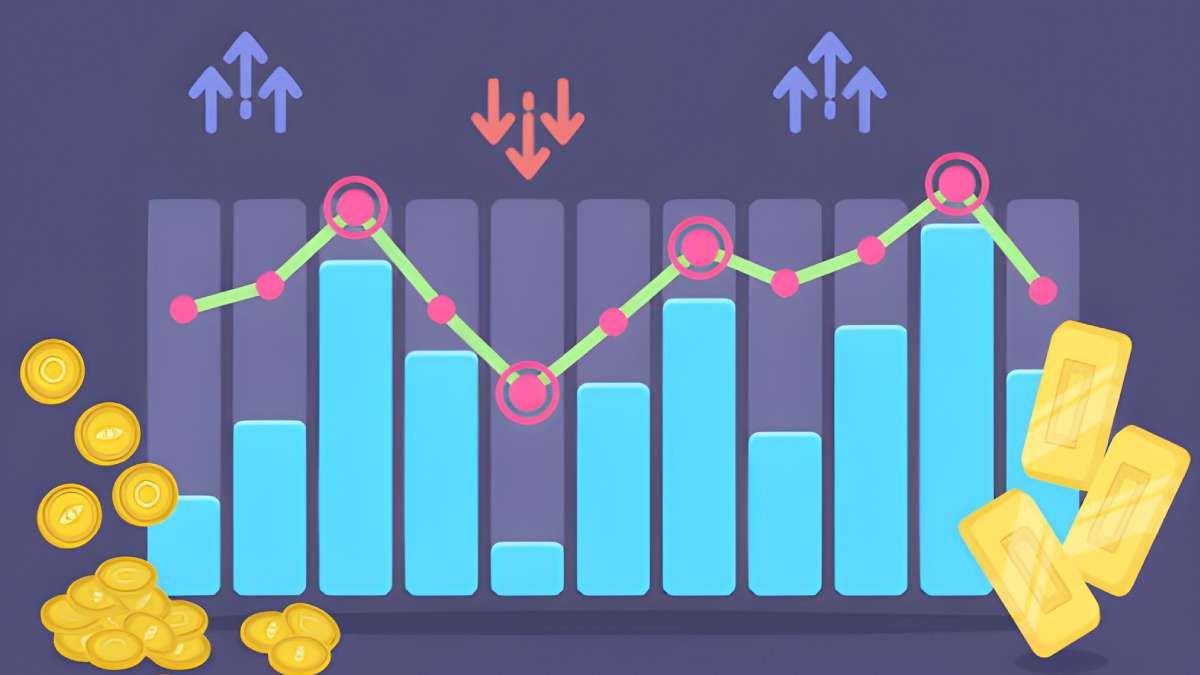Ripple’s native cryptocurrency, XRP, continues to capture the attention of traders and investors alike. Known for its fast transaction speeds, low fees, and utility in cross-border payments, XRP has carved a niche in the competitive cryptocurrency market. Its price movements are often closely monitored due to both market sentiment and the ongoing developments surrounding Ripple Labs’ regulatory challenges. In this article, we provide an in-depth XRP price analysis and outline what traders should keep in mind to navigate this dynamic asset effectively.
Table of Contents
ToggleRecent XRP Price Trends
XRP has experienced a rollercoaster of price movements over the past few years, influenced by regulatory news, market cycles, and adoption rates. In 2025, the token has shown relative resilience, trading in a range that reflects cautious optimism among investors. The recent uptrend indicates that traders are returning to XRP, possibly driven by renewed interest in altcoins following Bitcoin and Ethereum price rallies.
Key price levels have played a significant role in shaping market sentiment. For instance, support around $0.45–$0.50 has consistently prevented sharper declines, while resistance near $0.60–$0.65 has been a barrier to bullish momentum. Trading volume has also increased on major exchanges like Bybit, suggesting a resurgence of short-term trading activity and stronger investor confidence.
Technical Analysis of XRP
A technical analysis of XRP is essential for traders looking to make informed decisions. Here are some key insights:
- Support Levels: The $0.45–$0.50 range remains critical. Breaking below these levels could trigger a sharper downtrend, potentially testing previous lows near $0.40. Traders often use these support zones to set stop-loss orders and manage risk.
- Resistance Levels: XRP faces immediate resistance between $0.60–$0.65. A successful breakout above this zone could signal a bullish phase, attracting more buying interest. Longer-term resistance may be observed around $0.75, where historical price action shows prior selling pressure.
- Moving Averages: The 50-day and 200-day moving averages currently indicate mixed sentiment. While short-term trends show potential bullish momentum, XRP must maintain stability above these averages to sustain upward momentum.
- Relative Strength Index (RSI): The RSI currently hovers in the neutral zone. This suggests that XRP is neither overbought nor oversold, giving traders opportunities for both long and short positions depending on broader market dynamics.
- Volume Analysis: Recent trading volumes have increased during price rallies, indicating genuine buying interest rather than speculative spikes. Volume confirmation is critical for validating trend strength.
Fundamental Factors Influencing XRP Price
Beyond technical analysis, several fundamental factors affect XRP’s price and should be monitored by traders:
- Regulatory Clarity: Ripple Labs has faced ongoing legal scrutiny, particularly in the United States regarding XRP’s status as a security. Positive developments in these legal proceedings often result in bullish price action, while setbacks can lead to sharp corrections.
- Institutional Adoption: RippleNet, the network enabling fast and low-cost cross-border payments, continues to onboard banks and financial institutions globally. Each new partnership can boost XRP’s utility, demand, and price potential.
- Market Sentiment: As with most altcoins, XRP’s price is heavily influenced by Bitcoin and Ethereum trends. A bullish crypto market generally lifts XRP, while bearish sentiment can lead to declines.
- Macro Events: Global economic conditions, interest rate changes, and geopolitical events can indirectly impact XRP, as traders reassess risk in digital assets compared to traditional markets.
- Technological Developments: Updates to the XRP Ledger, including improvements in transaction speed, scalability, and interoperability, can enhance investor confidence and influence market price.
Key Trading Strategies for XRP
For traders looking to capitalize on XRP price movements, combining technical and fundamental analysis is crucial. Here are some strategies:
- Range Trading: When XRP is moving between clear support and resistance levels, traders can buy near support ($0.45–$0.50) and sell near resistance ($0.60–$0.65). Stop-loss orders should be placed slightly below support to minimize losses.
- Breakout Trading: Traders may focus on significant breakout opportunities. For instance, a clear move above $0.65 with strong volume could indicate a bullish trend, presenting potential profit opportunities.
- News-Based Trading: Ripple’s legal proceedings, partnerships, and adoption announcements often lead to price spikes. Traders can capitalize on short-term volatility by monitoring news and reacting quickly.
- Risk Management: XRP’s volatility requires disciplined risk management. Traders should avoid over-leveraging positions and always use stop-loss and take-profit orders to protect capital.
What Traders Should Watch
- Support and Resistance Levels: Key price zones provide insight for entry and exit points. Ignoring these can lead to losses in volatile markets.
- Ripple Legal Updates: Regulatory news can trigger rapid price swings. Staying informed is critical for timely decisions.
- Market Sentiment: Broader crypto market trends, especially Bitcoin movements, significantly influence XRP.
- Trading Volume: High volume during rallies or dips validates trend strength, whereas low volume can indicate weak momentum.
- Technical Indicators: RSI, MACD, and moving averages provide clues about overbought or oversold conditions and potential trend reversals.
Conclusion
XRP remains a fascinating asset for traders and investors due to its utility, liquidity, and potential for both short-term gains and long-term growth. While short-term volatility is expected, combining technical analysis with fundamental insights allows traders to make informed decisions and manage risk effectively.
As Ripple continues to expand its partnerships and navigate regulatory challenges, XRP’s price may experience significant movements, presenting opportunities for disciplined traders. Staying informed, monitoring key price levels, and understanding market dynamics are essential for anyone looking to trade XRP successfully.
Whether you are a beginner or an experienced trader, keeping an eye on both the technical charts and fundamental developments is key to navigating XRP’s dynamic market landscape.
XRP Price Analysis: What Traders Should Know
Shashi Teja
Related posts
Hot Topics
XRP Price Analysis: What Traders Should Know
Ripple’s native cryptocurrency, XRP, continues to capture the attention of traders and investors alike. Known for its fast transaction speeds,…
How a good payment gateway reduces transaction failure rates
The global online transaction failure rate ranges from 5% to 10%, with certain sectors facing higher losses. Such failures result…



